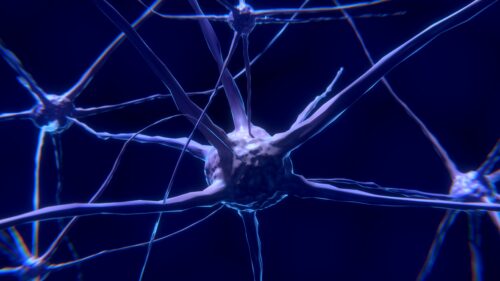Image courtesy of Pixabay.
The brain is, arguably, the most important organ in the body. It is the seat of consciousness, emotion, language, and intelligent action: it is what makes us human. This makes damage to the brain all the more terrible. While the brain can repair minor damage by making more neurons or regrowing axons (the ‘cables’ that carry signals between neurons), its regenerative capabilities are too limited to restore proper function when large swaths of it are lost. Injuries like strokes or traumatic brain injuries could have lifelong consequences for cognitive function. Consequently, much neuroscientific research aims to develop strategies to repair large-scale brain damage.
Neurosurgeon Han-Chiao Isaac Chen and his team at the University of Pennsylvania have found a promising lead. They have demonstrated that clumps of stem cell-derived tissue, called organoids, can successfully integrate into the damaged brains of adult rats. These organoids are created by applying an understanding of developmental biology to cause stem cells to develop in a structured manner, often mimicking an organ or part of an organ. Chen’s target was the rat’s visual cortex: the part of the brain that takes in visual input and abstracts it into edges and objects.
Chen and his colleagues surgically removed regions of the rats’ visual cortexes and replaced them with organoids grown from human stem cells. They then allowed the rat to live with its transplant for one to three months before evaluating the integration between the organoid and the rat’s brain. The researchers found that axons from the rat’s cortex and the organoid had bridged the boundary between them and that output from the retina was successfully reaching the organoid.
Additionally, Chen and his team evaluated the functional integration of the organoid by characterizing the responses of its neurons to different visual stimuli. Areas of the organoid not only responded to flashing lights, but also responded with varying strengths to moving bars presented at different angles. This preference by different neurons for edges of different orientations is a key part of visual systems that allows for the recognition of more complex features, like shapes.
Both the physical and functional integration of the organoid into the rat’s brain make organoid transplantation a promising technology for neural tissue repair. Previous attempts to restore visual function by transplanting unorganized collections of stem cells into lesions have failed to yield more complex responses to stimuli, like edge orientation selectivity. Accordingly, Chen believes that the organoid’s structure plays an important role in restoring higher-order functions. “A central hypothesis of my lab is that neural tissues with brain-like structure will be more effective than individual cells for rebuilding the brain,” Chen said. “Brain organoids have by far the greatest degree of brain-like structure of any neural tissue that can currently be created in the lab.”
An ideal solution to repairing large-scale brain damage would be to transplant entire columns of cortex directly from fetuses, which would possess the structure needed to restore higher-order functions. However, this approach carries with it the ethical questions of obtaining and using fetal tissue. Organoids may be the next best thing. With more research, scientists will better understand how to control organoid development to yield desired structures, such as the layers of the cortex. Although this technology is still far from implementation in humans, it holds great promise.

